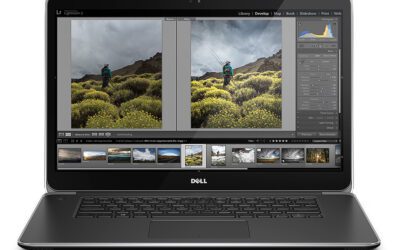ID Security: Don’t believe the myths about what you need in your wallets to protect personal information.

Travelers need to unload their wallets before their journey and carry only essentials.
Unfortunately, too many travelers carry a fully loaded wallet. The wallet is packed with multiple credit cards, receipts, business cards, multiple identifications, insurance cards, a Social Security Card, ATM and debit cards, membership cards, family photos, etc. With those items, a thief can build an identity picture of you. This information can be used to impersonate you to steal your money and assets unless you act fast — literally. Even then, reclaiming your identity and funds could take many years.
Here are six wallet myths that I have found people believe too often. That puts them in jeopardy every time they travel.
Never travel with your Social Security Card. Leave it at home.
Myth #1 – You need your Social Security card in your wallet as a backup to prove your identity while traveling. I haven’t discovered why Americans must use their Social Security card while traveling. US nationals rarely need their Social Security card for anything and should only consider slipping it into their wallet when they know they must use it.
Employers require new employees to show their Social Security card when hired for verification purposes. You’ll need it when applying for a Real ID driver’s license or non-driver’s Real ID. Otherwise, while you’ll need to know your Social Security number to open financial accounts, etc., you rarely need to produce your card physically. Leave your card in a safe place at home when you travel. I never have mine with me, unless I know I have to use it.
Myth #2 – Your work identification is an important backup when traveling.
Work identification cards, even with photo IDs, are generally worthless except for work. They are of limited value, as they don’t prove much except for whom you work. For international travel they are of no importance. There are a few exceptions. For example, if you’re traveling for business, show your employee ID to confirm your work identity. Otherwise, leave it at home when traveling.
Thieves can use your work identification to help them build a profile of you to assist them in stealing your identity. Like any ID, report it as soon as possible if lost or stolen.
Businesses want cash or payment by credit or debit card to ensure they’re paid — not checks.
Myth #3 – A blank check in your wallet is needed when traveling in an emergency.
The days when travelers could easily pay bills by personal check while traveling are over. Leave them at home unless you’ve prearranged to pay an account with a personal check. Businesses today want payment certainty to the extent possible. They can get that via cash, credit, or debit card. Bank issuers accept liability for bad cards and accounts if businesses follow their procedures properly. Payments through systems like Apple and Android Wallet are also acceptable across much of the globe. Leaving your checks at home protects knowledge of your bank, plus account and routing numbers.
Birth certificates and Social Security cards are the most valuable IDs for thieves. Leave them at home when traveling.
Myth #4 – A birth certificate in your wallet is essential to prove your identity for travel.
While you may have to prove your identity while traveling domestically, you usually never have to prove citizenship. A driver’s license or non-driver’s ID usually is the only ID you’ll need for domestic travel. Real ID-compliant IDs will be required for U.S. domestic air travel when the Real ID law finally goes fully into effect on May 7, 2025.
Most of the time, birth certificates are of no use internationally. Whenever flying internationally, only passports are accepted. For US citizens, there are a few instances when Passport Cards and other ID will suffice, but not if you have to return by air in an emergency.
The problem with carrying your birth certificate is that if stolen, birth certificates are among the most valuable of documents for thieves to use to steal your identity, with no way to cancel them. If a birth certificate gets into a thief’s hands, there’s little anyone can do about it.
Use an online password manager. Don’t carry password cheat sheets.
Myth #5 – Password cheat sheets are important to stow in your wallet so you can log into important electronic accounts while traveling.
No traveler’s wallet is 100 percent safe from theft, no matter where it’s stowed. Losing a password cheat sheet can prove to be a disaster in the short term while you work to change passwords. Thieves will likely be a step ahead of you, cleaning out your accounts and changing your passwords to make it hard for you to regain control of your accounts. Some passwords may seem unimportant, but in reality, none are.
Never carry a password cheat sheet while you travel. Instead, use a password manager that can be used from computers and cellular devices, including smartphones and tablets. That way, you only need to memorize the password manager login credentials.
Myth #6 – Carry your credit and debit cards in your wallet with you at all times when you travel to keep them safe.
If your cards are lost or stolen, they can be quickly canceled, but it can take days or longer for new cards to catch up to you while on a trip. You’ll have to make payment arrangements for your bills, such as your hotel, during that time. Eating at restaurants will become extremely difficult.
Only take two credit cards and an ATM debit card when traveling. Never carry them in your wallet while traveling. Keep them secreted in a neck wallet under your shirt while in transit. Only carry a single credit card in a neck wallet and leave the other cards in the safe at the hotel. That way, when out and about destinations, you still have another back at the hotel if a credit card is somehow lost or stolen. Carry the ATM debit card when you use it at an ATM. Pay all bills with a credit card, never a debit card, for safety.
Before leaving on a journey, empty your wallet and only put essentials back in for your trip.
Leave membership cards you won’t use at home. If you’re not driving your vehicle on the trip, leave its owner’s registration at home. Carry your cash in a separate pocket from your wallet, and don’t keep your credit card in your wallet either. Use a neck wallet or money belt for them.
READ ALSO:
Why Travelers United supports truth in advertising for travel influencers
Add EpiPens to airline emergency kits to save passengers’ lives
After many years working in corporate America as a chemical engineer, executive and eventually CFO of a multinational manufacturer, Ned founded a tech consulting company and later restarted NSL Photography, his photography business. Before entering the corporate world, Ned worked as a Public Health Engineer for the Philadelphia Department of Public Health. As a well known corporate, travel and wildlife photographer, Ned travels the world writing about travel and photography, as well as running photography workshops, seminars and photowalks. Visit Ned’s Photography Blog and Galleries.



